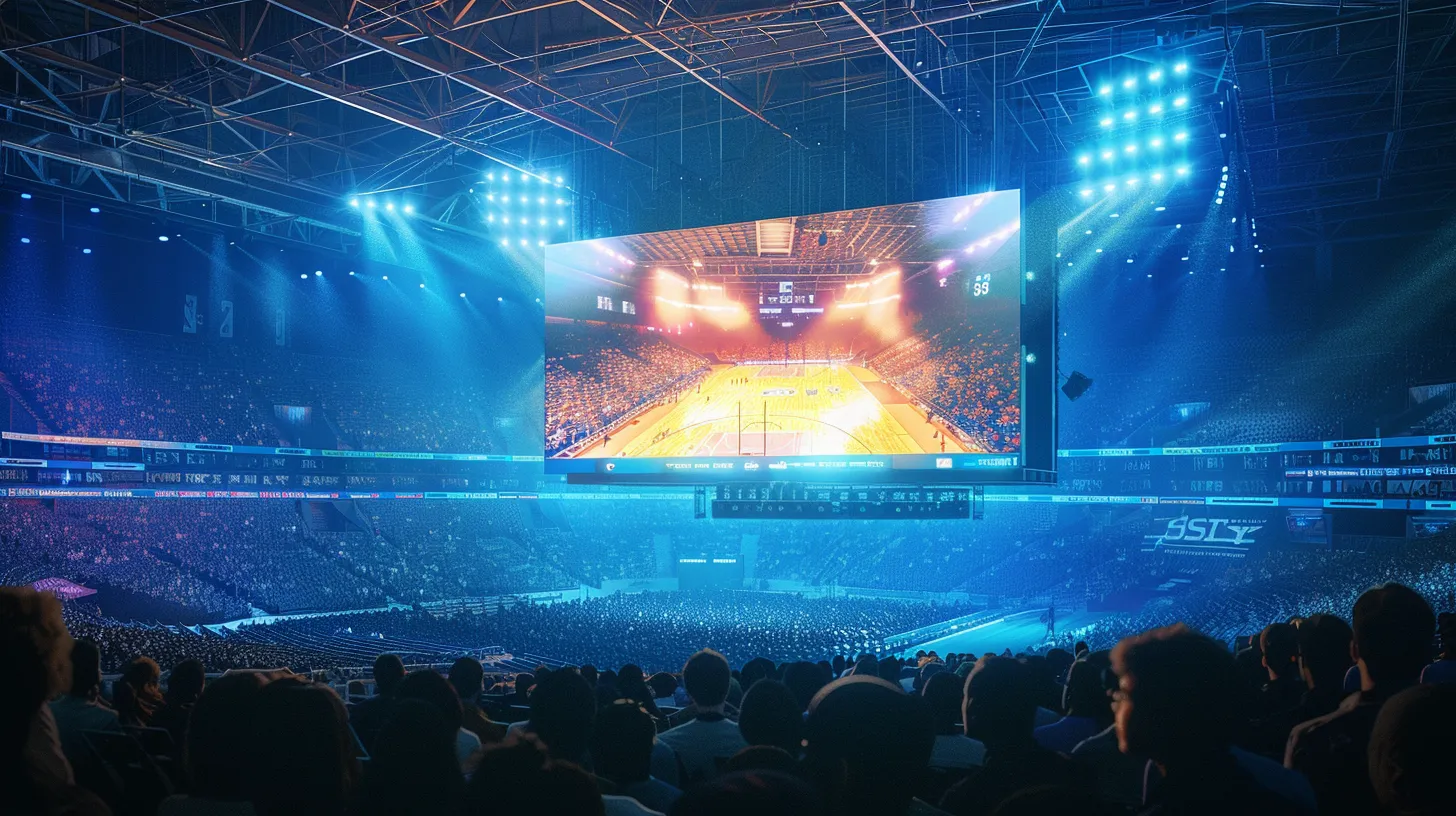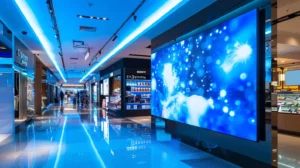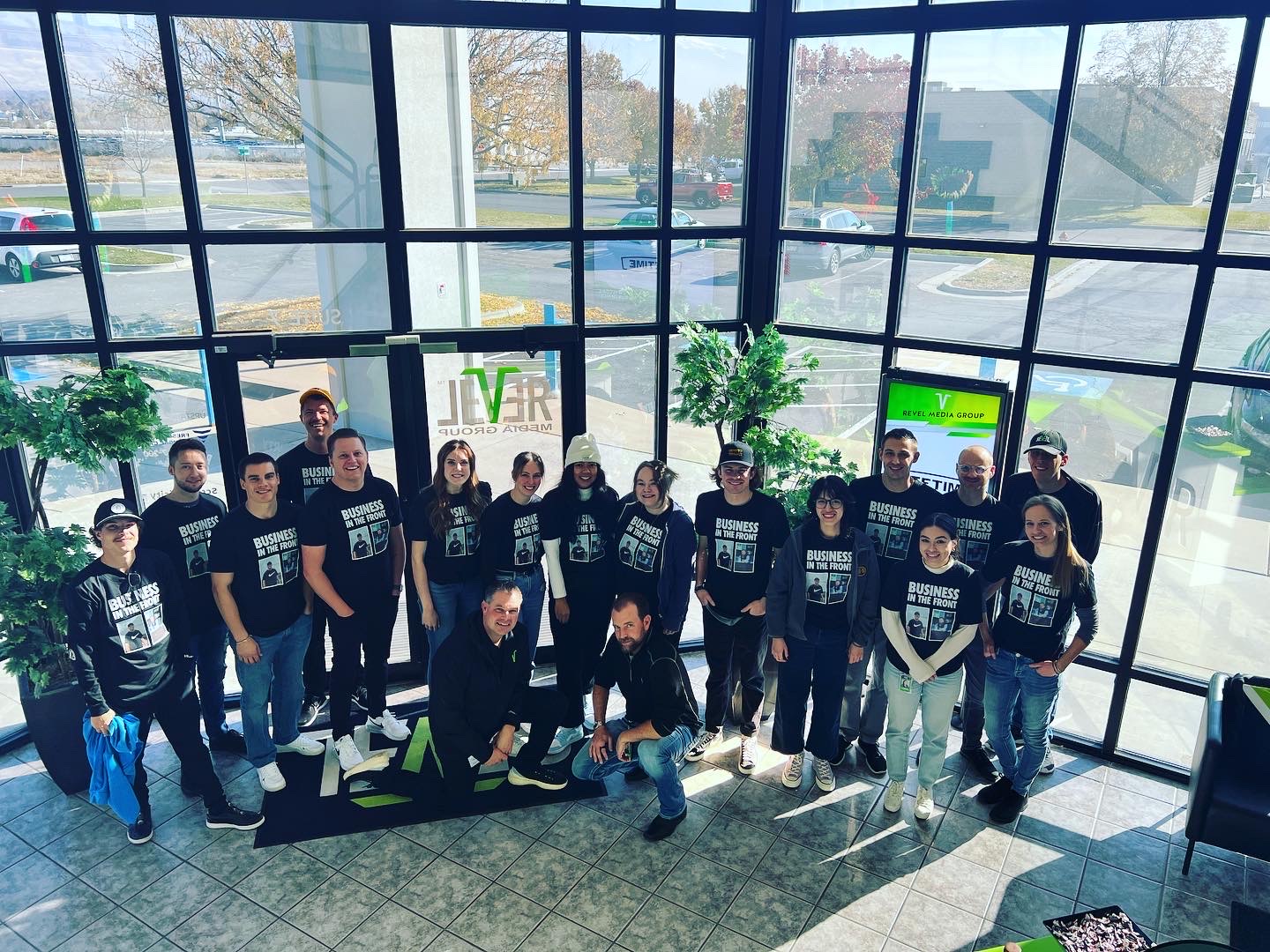Key Trends Shaping Digital Signage in 2025
The digitalsignagelandscape is changing fast. This post reviews essential trends like emerging audio visual practices, personalized displays, and interactive experiences set for 2025. Readers will learn how to modernize communication and improve customer engagement with dynamic displays. The content addresses the struggle of updating signage while staying on top of industry best practices, offering clear strategies to boost ROI for businesses.
Key Trends Shaping Digital Signage in 2025
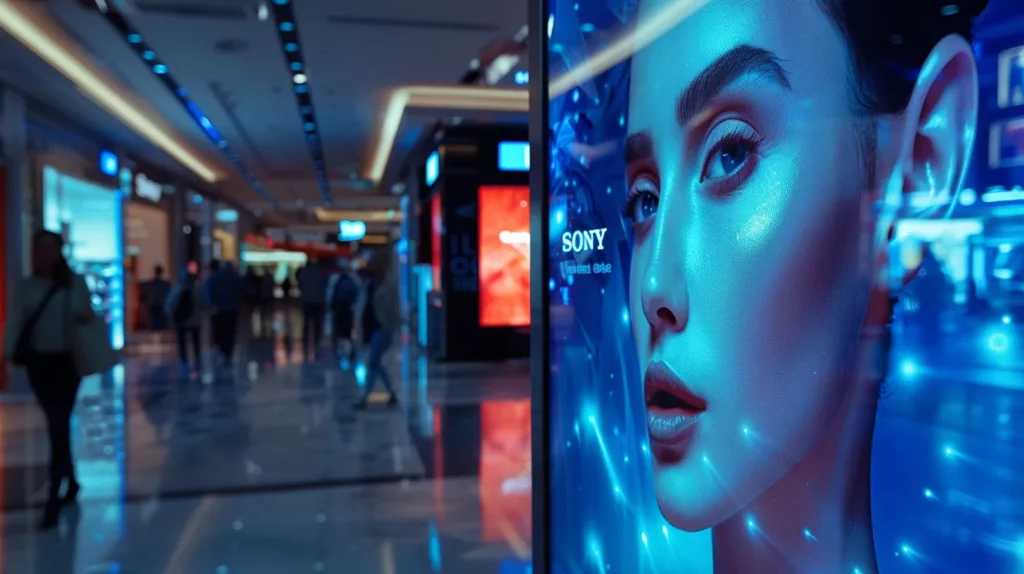
The digitalsignage market in 2025 is evolving rapidly with a focus on trade showdisplays, vibrant color use, and smartsignage solutions. This section examines the growth of digitalsignagetechnology, augmented reality integration, hybrid events, high-resolution display advancements, interactive touchless options, machine learning insights, and improved backlight practices promoting sustainability.
Continued Growth of Digital Signage Technology
Digitalsignagetechnology continues to expand as businesses seek more effective ways to engage consumers. Companies now use digital signs to replace traditional paper materials, allowing marketing teams to efficiently target their audience and improve collaboration across projects.
Organizations find value in adopting new digital signs that offer quick updates and clearer communications. This approach supports marketing efforts by connecting relevant information to the target audience while promoting smoother collaboration between departments.
Integration of Augmented Reality in Signage Solutions
The integration of augmented reality in signage solutions represents a major evolution in digitalcommunication. This advancement improves content creation and interactivity, offering businesses practical tools to enhance accessibility and customer engagement while showcasing products such as clothing through dynamic displays.
The approach offers real-time updates and interactive experiences, providing a clear path for organizations seeking to engage a modern audience. Employers can harness this digitalinnovation to streamline content creation efforts, resulting in smartdisplays that align with industry trends in evolution and accessibility.
Hybrid Events and Their Impact on Digital Displays
Hybrid events continue to drive change in digitalsignage solutions, with businesses relying on dynamic displays to boost audience engagement. This format uses digitalsignage along with social media channels, allowing companies to shape a unified message during live events while modern lighting techniques support clearer visuals.
The integration of hybrid events offers practical applications for digitalsignagetrends, enabling organizations to bridge physical and digital environments. Through hands-on experience, experts have seen these setups streamline communication and improve interactivity, ultimately reducing event obstacles and enriching customer engagement.
Advancement of High-Resolution Display Technologies
High-resolution display technologies now offer exceptional clarity in digitaladvertising, improving the display of lettering and typography to meet modern business standards. This advancement enables organizations in trade industries to deliver persuasive visuals with minimal energy waste, ultimately supporting more impactful business communications.
Businesses benefit from more efficient use of high-resolution screens that deliver crisp, clean imagery with precise lettering and typography. These improvements not only boost digitaladvertising efforts but also reduce energy consumption, creating a balanced solution for modern trade needs.
Rise of Interactive and Touchless Signage Solutions
The surge in interactive and touchless signage solutions offers a robust tool to improve user experience in various settings, from classroom environments to virtual event platforms. Experts observe that these displays simplify conferencing interactions by providing real-time updates, which help organizations deliver targeted information efficiently.
The integration of interactivesignage has shown measurable benefits in boosting engagement during virtual events and enhancing the learningexperience in classroom scenarios. Professionals report that such solutions streamline communication, making them a practical asset for businesses aiming to upgrade their conferencing systems and overall digital engagement.
Importance of Sustainable Practices in Future Signage
The signage industry is witnessing a shift towards sustainability, with businesses incorporating eco-friendly measures such as energy-efficient displays to decrease carbon footprints during transport. This trend is critical for organizations adapting to remote work routines and setting step and repeat protocols in cities, ensuring that every installation is both effective and environmentally responsible.
Sustainable practices lead to practical benefits by reducing resource waste and operational costs in the signage industry. Experts note that by implementing eco-conscious solutions, companies achieve greater energyefficiency during transport and setup in diverse cities, all while maintaining high standards as seen with step and repeatdisplays and remote work setups.
Digitalsignagetrends set firm ground for progress. Emerging audio visual trends bring fresh insights that draw businesses in.
Emerging Audio Visual Trends for 2025
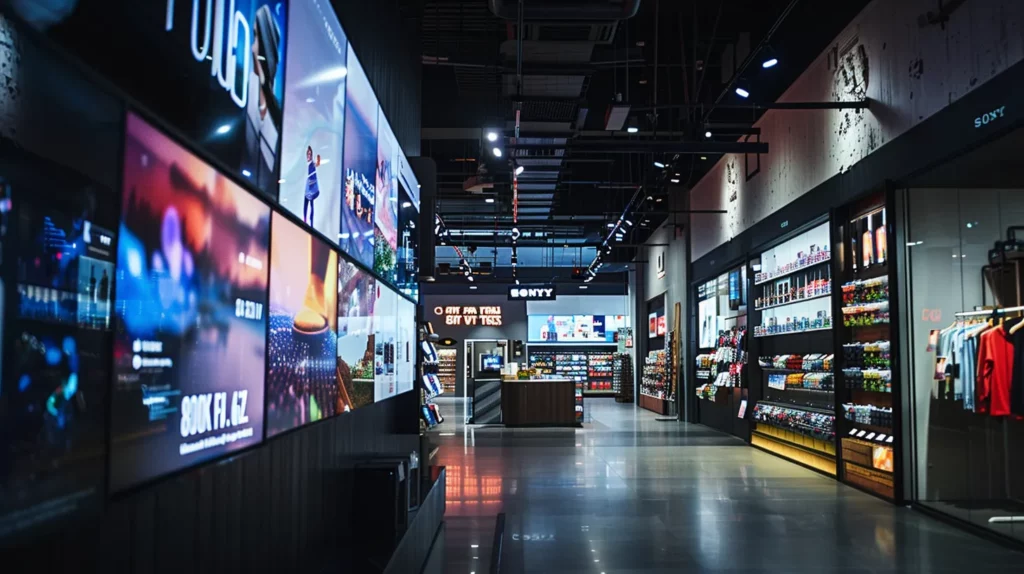
Digitalsignage advances in 2025 now include 8K and beyond displaytechnology, AI-driven content management, and programmatic advertising. Touchscreen interfaces and remote monitoring solutions boost user interaction across displays in the united kingdom. Architects and engineers now favor innovations in transparent and OLEDdisplays, along with a shift towards AV-as-a-service models for seamless image production.
Emphasis on 8K and Beyond in Display Technology
The industry now sees a focus on 8K and beyond displaytechnology that uses a sensor to optimize picture quality, making digital signs more dynamic and efficient in storytelling. The integration of a microphone further supports interactive content on wall installations, providing a robust tool for clear and engaging messaging.
Experts note that emerging displays set new standards in digital clarity, offering precise details that support real-time updates on various signs. This technology also facilitates better content delivery, where sensordata and microphone inputs enhance the overall communicationexperience and ensure effective storytelling in modern digitalsignage.
AI-Driven Content Management and Automation
Digitalsignage experts observe that AI-driven content management and automation deliver precise targeting while reducing waste and streamlining operations. These systems integrate biophilic design elements into real estatedisplays, offering practical insights for modern businesses seeking efficient content management and smoother processes.
Industry professionals report that automation simplifies updates and enhances audience engagement on digital screens, thereby reducing manual errors and saving time. This approach demonstrates clear value by combining intelligent content management with advanced automation, ultimately supporting real estate initiatives and promoting sustainable practices.
Programmatic Advertising in Digital Signage
Programmatic advertising in digitalsignage has been streamlined by integrating advanced digital signage player technologies that focus on user immersion and secure attention. This method brings a refreshing twist to marketing by showing tailored ads similar to offering a refreshing drink during a break while improving web conferencing experiences within corporate settings.
Industry experts highlight that automation in ad placement improves operational efficiency and delivers immersive content designed to captivate viewers. Strategic use of digital signage player features and real-time data helps organizations target audiences effectively, ensuring that every ad gains the necessary attention during live web conferencing sessions.
Remote Monitoring and Management Solutions
Remote monitoring and management solutions simplify the process of maintaining digitalsignagedisplays, ensuring that businesses meet budget requirements while maximizing sustainability. This approach supports real-time troubleshooting and upkeep of led display systems, which is crucial to maintain clear visual communication across entertainment venues and corporate settings.
Experts note that these solutions enable centralized control, reducing the need for on-site visits and lowering long-term operational costs. By incorporating sophisticated sensors in the led displayinfrastructure, organizations benefit from immediate updates that sustain performance and extend the lifespan of display assets.
Innovations in Transparent and OLED Displays
Innovations in transparent and OLEDdisplays allow digitalsignage to deliver clear, concise messages with improved image quality. Industry leaders observe that integrating Internet of Things sensors helps capture real-time behavior insights, supporting actionable learning and even tracking specific animal-inspired engagement trends.
Experts attest that these advanced displays reduce energy consumption and elevate visual communication. They note that the design improvements facilitate better understanding of audience behavior, enabling businesses to refine their message strategies and drive effective learning from customer interactions.
The Shift Towards AV-as-a-Service Models
The shift towards AV-as-a-Service models offers businesses a streamlined method to update their digitalsignage with ease, ensuring that every logo and brandmessage is consistently displayed across all touchpoints. Industry experts report that these service models simplify content management and integrate seamlessly with advanced visual systems, while supporting everyday operations in a dynamic landscape.
This service-driven approach provides practical solutions for managing live presentations and even integrating podcast segments into routine displays. Business leaders appreciate that AV-as-a-Service models enable real-time content revisions, ensuring digitalsignage remains current and effectively engages audiences through every critical touchpoint.
Emerging tech trends drive screens to new heights. Personalization now takes center stage, offering simple yet powerful ways to connect.
The Role of Personalization in Digital Signage
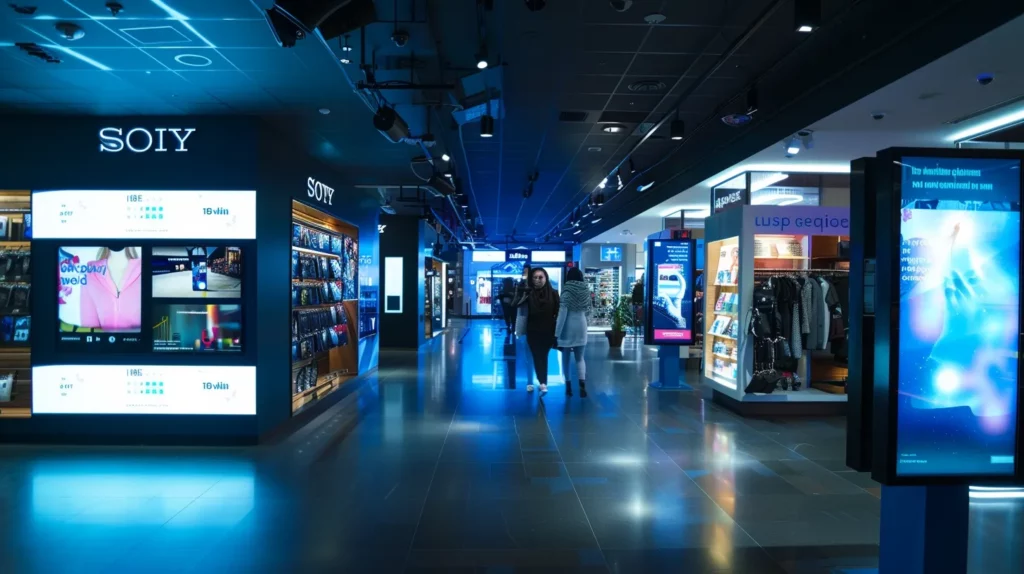
Personalized digitalsignage offers customizable content for targeted audiences on smart tvdisplays and smartbuildings, increasing visibility and streamlined unified communications. Dataanalytics drive content adjustment based on real-time graphicsfeedback, while case studies reveal successful personalized campaigns. This section outlines practical steps to achieve tailored messages that boost engagement and improve customer interactions.
Customizable Content for Targeted Audiences
Organizations can create customized content on top digital signage screens to effectively target their desired audiences, ensuring that viewers receive the most relevant information. This approach supports unique environments such as mobile setups, while elements like qr code integration and design choices using materials like plastic and wood improve both functionality and aesthetic appeal.
Expert observations confirm that businesses using personalized digitalsignage benefit from higher engagement and clearer communication with their customers. By focusing on mobile-friendly interfaces and incorporating interactiveqr code features with design motifs inspired by materials such as plastic and wood, organizations achieve a more engaging experience on top digital signage platforms.
Utilizing Data Analytics for Enhanced Engagement
Dataanalytics drives precision in software solutions for digitalsignage, enabling effective navigation through user data and audience preferences. This approach blends minimalism with creativity to fine-tune communication strategies and deliver targeted content that resonates with viewers.
Experts observe that actionable insights from dataanalytics empower organizations to optimize screen content, balancing simplicity with creative details. The integration of analytics supports seamless navigation between segments while reinforcing communication efforts, making digitalsignage a practical asset for enhancing engagement in modern business environments.
Case Studies of Successful Personalized Campaigns
Industry experts report that targeted personalized campaigns have proven highly effective in efforts to modernize your brand, with real-life examples demonstrating improved management of customer interactions and streamlined construction of display content that performs well even on a laptop. Data collected from these implementations reveal increased customer engagement and refined communication strategies that meet modern business needs.
Observations from case studies indicate that personalized digitalsignage attracts targeted audiences through well-curated content, allowing organizations to modernize your brand while enhancing management practices during construction projects. Data insights and practical examples show that campaigns using versatile assets such as a laptop for remote updates offer measurable success in customer engagement.
Personalization has reshaped how messages reach their audience. Next, new signage ideas spark fresh ways to engage and connect.
Future Signage and Interactive Experiences
Immersive technology reshapes audience engagement for brands, with interactive kiosks and innovative advertising strategies. NFC and QR codes bolster user interaction in community settings, while new wayfinding solutions refine clarity on awningdisplays. Upcoming sections provide practical insights into each advancement for robust digitalcommunication.
The Impact of Immersive Technology on Engagement
Immersive technology significantly improves customer engagement through dynamic digital interfaces. Organizations are integrating cms platforms with immersive displays to deliver outdoor advertising that captures consumerattention while conveying clear information. This approach reinforces efficient graphic design elements that resonate with modern consumers and boost real-time interaction.
The adoption of immersive solutions has proven to simplify message delivery and enhance user experience in competitive markets. Businesses utilize advanced cms features to update displays instantly, creating a seamless transition between traditional outdoor advertising and interactive experiences that support informed consumer decisions. This integration ensures that each display maintains a professional edge while promoting sustained customer engagement.
Use of NFC and QR Codes to Enhance User Interaction
Digitalsignage business professionals recognize that incorporating NFC and QR codes offers a practical solution for improving efficiency in digitalsignage systems. This approach allows for quick access to information and interactive content, making displays more engaging and clearer for customers while supporting environmentally friendly practices.
Industry experts note that these technologies simplify audience interaction, similar to the clear visual impact provided by neondisplays. This method provides actionable insights that help businesses streamline communication strategies while meeting user demands through modern digitalsignage systems.
Innovations in Wayfinding Solutions
Recent developments in wayfinding solutions equip designers with innovative tools to streamline navigation. By integrating artificial intelligence with traditional signage techniques such as channel letters and neon sign features, organizations can create clear interiordisplays that adapt based on real-time feedback.
Industry experts highlight that these advances provide practical guidance for users by delivering precise directional cues in busy venues. The use of artificial intelligence in wayfinding allows for dynamic updates that respond to visitor feedback, resulting in systems that effectively enhance interiornavigation and overall customer satisfaction.
The industry now faces new rules that change the game. Regulations step onto the field, promising fresh challenges and rewards.
Regulatory Changes Affecting Digital Signage
Regulatory changes impact digitalsignage compliance, futureadvertising regulations, and local ordinance navigation. Experts assess key areas affecting sectors like health care and retail, offering insights for installations using metal frames and video wall configurations. This guidance improves digitaldisplayexperience and provides clear strategies for businesses.
Understanding Compliance for Digital Displays
Experts note that compliance for digitaldisplays requires careful monitoring of simulation outcomes, especially as businesses adopt hybrid models in various buildings. They stress that regular testing and clear guidelines on printing standards help prevent issues that may arise during internet-based data integration, ensuring a smooth operation of digitalsignage installations.
Industry professionals emphasize that understanding regulatory requirements rests on practical experience and data-driven insights. They observe that collaboration between compliance teams and digitalsignage managers in hybrid settings enhances simulation accuracy while maintaining robust internet security and printing protocols across multiple buildings.
The Future of Advertising Regulations
Industry experts predict that futureadvertising regulations will drive improvements in digitalsignageinfrastructure, facilitating greater interactivity and boosting shopping experiences for the customer. They share practical examples where regulatory updates have led to increased innovation in digitaldisplays, ensuring messages remain clear and compliant.
Regulatory bodies are expected to establish standards that support real-time customer engagement and interactivity while fostering an environment conducive to robust shopping experiences. Experts note that continual innovation in digitalsignageinfrastructure will provide actionable insights, enabling businesses to meet new advertising regulations effectively.
Navigating Local Ordinances for Signage Deployment
Industry experts advise that businesses remain vigilant when navigating local ordinance requirements for digitalsignage deployment. They suggest using mobile app integrations and data analysis tools to ensure that every led display, banner, and loyalty program meets regional guidelines, which helps streamline regulatory compliance.
Consultants emphasize that a proactive approach in regulation monitoring aids digitalsignage projects considerably. They recommend that organizations implement data analysis techniques and mobile app controls for leddisplays, banners, and loyalty initiatives, facilitating adherence to local ordinances while maintaining professional standards.
Regulatory shifts have set a clear course for the market. Soon, sector trends will reveal practical steps that matter to business success.
Industry-Specific Trends in Digital Signage
Digitalsignagetrends for 2025 include retail innovations that boost consumer interactions and corporate installations that support platforms like microsoft teams and video conferencing. The section highlights improvements in design and customer service at trade show setups, as well as evolving trends in education and informational displays. Each topic offers actionable insights for professionals in these areas.
Retail Innovations and Consumer Interactions
Retail innovations in digitalsignagedisplaytechnology are steadily lifting the curve of customer engagement by incorporating personalization into campaigns that make each billboardmessage resonate uniquely with viewers. This approach helps businesses achieve measurable improvements in consumer interactions while addressing the challenge of standing out in a crowded market.
Industry professionals utilize advanced digitalsignagedisplays to integrate real-time data into billboard content, fostering a responsive marketing environment. The use of this technology enhances personalization efforts, guiding retail companies to design campaigns that effectively meet customer needs and solidify brand presence.
Digital Signage in Corporate Environments
Corporate environments are integrating high-impact 8k resolutionsignage solutions to boost internal communications and support secure data sharing through cloud computing. Industry experts note that advanced signage paired with virtual reality demos can simplify complex health and wellness initiatives, leading to clearer messaging that resonates with both employees and management.
Practical insights reveal that companies benefit from streamlined operations when upgrading to modern signage systems that incorporate cloud computing features for real-time updates. By leveraging tools such as 8k resolutiondisplays and virtual reality experiences, organizations enhance their communication strategies, ensuring that messaging about health and corporate initiatives is delivered efficiently and effectively.
Trends in Education and Informational Signage
In education and informational signage, digital sign solutions are advancing to meet the needs of smart cities, offering real-time information for pedestrians and students alike. Industry professionals report that these digital signsdisplay clear language and effective communication, ensuring that essential updates reach every individual on campus.
Experts note that current trends in education leverage interactivedigital signs to deliver accurate information in multiple languages, which enhances both classroomlearning and public spacenavigation. This approach enables institutions to create environments where digitalsignage plays a key role in guiding pedestrian flow and supporting community engagement.
Conclusion
Digitalsignagetrends in 2025 drive innovation across trade showdisplays, augmented reality, and high-resolution technologies. Businesses implement smart solutions to streamline communication and support aligned marketing efforts. Experts observe that personalized content and dynamic interfaces boost user interaction across various environments. The evolving landscape provides actionable insights for organizations looking to modernize engagement and customercommunication.

